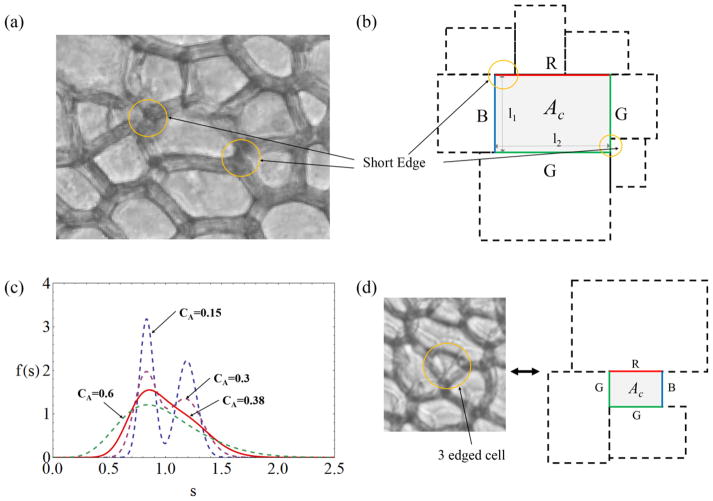Figure 4.
(a) Illustration of the occurrence of short-edge neighbors as a consequence of elongated (anisotropic) cell shape. (b) Schematic representation of the rectangular-cell model, with the three different types of edges (R, G and B) indicated by colors. The cells are polydisperse, but have the same aspect ratio. Short edges are highlighted in (a) and (b). (c) Probability distributions f (s) of edge lengths for area (gamma) distributions of different cA. (d) Example of a rare cell with n = 3 neighbors, corresponding to a modeling situation with one short B edge with ni = 0.

